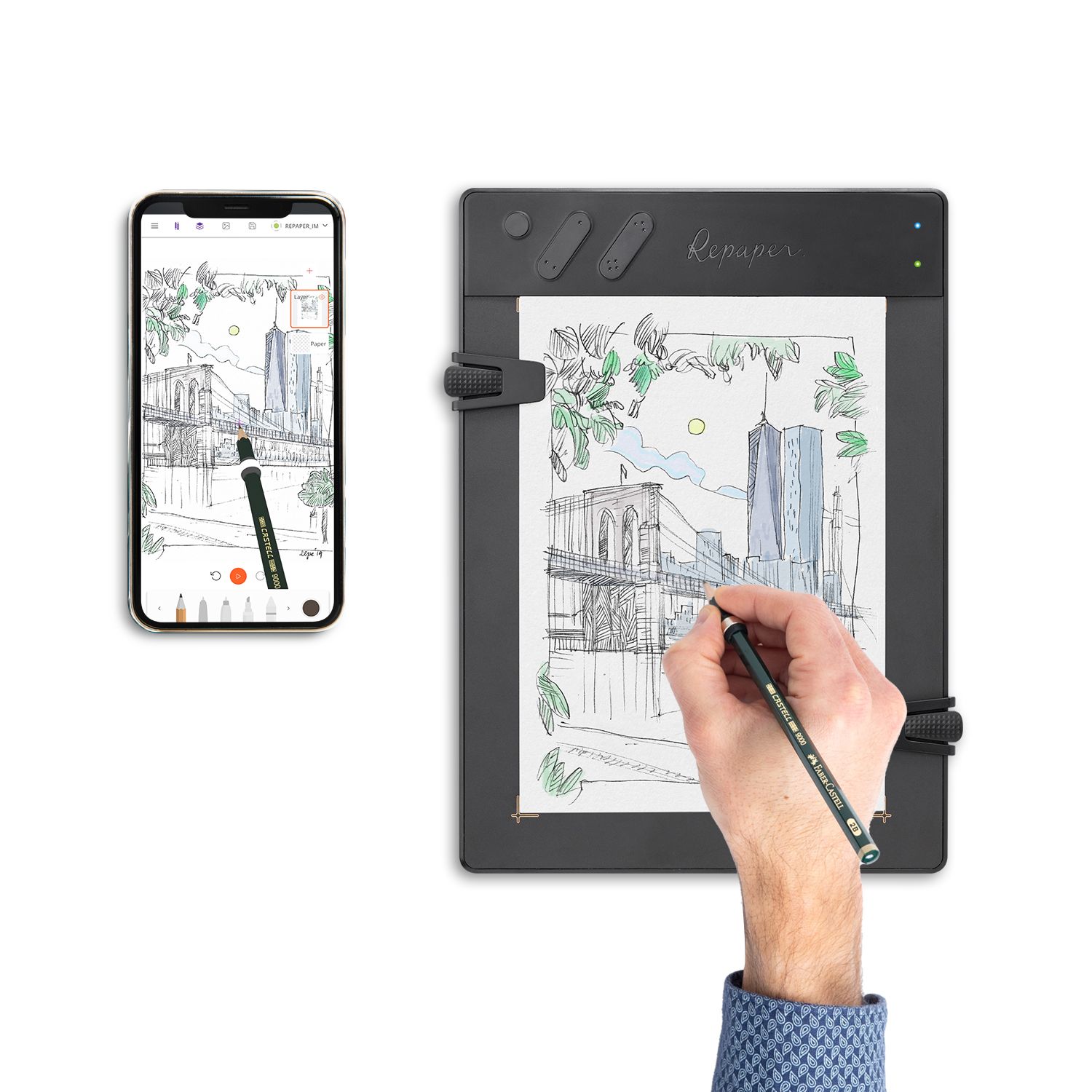
How to Become an Architect: Complete Guide for Creative
To imagine and construct the tomorrow’s buildings and interiors is a professional activity that makes many creative people dream. What are the specificities of the architect's job, what are the tools to master, which studies to carry out, and what is the necessary profile to succeed in this field? Description of the job, software and graphic tablets, training and ideal character traits ... we outline below the different elements to guide you towards the career of an architect.
What is the architect's job?
To practice the profession of architect usually consists in carrying out a construction or rehabilitation project, from the feasibility study to the construction and interior design, for those who have chosen to specialize in interior design. He/she will also be in charge of sketching the projects, producing the necessary documents for the building permit and the legal constraints, managing the building site as a project manager, and acting as an intermediary between the clients and the construction companies, explaining the architectural project in a simple and clear way for all parties. The role of the architect can however be quite different, depending on how each one wishes to specialize. When the duty of the architect will be generally to create projects for individuals (houses, apartments, specific projects...), it will also be possible to obtain the title of architect-urbanist, after a specific training, and work on public projects, being part of a global vision of urbanization of a place. Others may also want to study engineering to become an architect-engineer. This speciality, particularly in demand in civil engineering, will be focused on the technical side, rather than the creative side, as opposed to the interior architect whose role will be to imagine the aesthetic appearance of a place and to carry out the necessary work to achieve it. Finally, if some will prefer to work in an architectural agency, others might prefer to become a freelance architect, and practice in their own name. For this last option, it will however be necessary to take into account the registration with the association of the architects, and to have the necessary qualifications, in order to obtain the accreditation to control projects and to be able to practice without any legal concerns.


A digitally related profession.
Architectural design requires important technical skills in order for the designer to carry out a project that meets the standards and technical constraints imposed by the client and the environment. Among these, we can mention the use of software dedicated to architecture and drawing, which allow to produce precise sketches and blueprints. It is indeed important for the trained architect to be able to show his/her clients realistic sketches, illustrating the expected final result. This allows the person calling upon the services of the client in the field of architecture to be able to project him/herself and to understand the different possibilities that are offered to him/her. Many software exist, and if generalist softwares like Adobe Photoshop or Adobe Illustrator can totally do the job to produce sketches, some are more specialized like Autodesk, a design and creation software focused on engineering and architecture, ideal for the engineer-architect. In order to help with digital drawing, the graphic tablet becomes an indispensable tool for making architectural sketches. One cannot imagine having to make architectural designs directly with the trackpad or the mouse, which are the contrary of what one could call "precision".

In particular, the graphic tablet allows the designer to obtain a fluid line, as if one were drawing on a sketchbook. However, because of the hand-eye coordination, which necessitates looking at the computer screen to see the architectural sketch being drawn in front of your eyes, and with the sensation of the pen being somewhat different from what you would feel with a standard pencil, you can lose some of that agility. If you can be trained to get used to all these new elements, the scanner tablet, such as the ISKN Repaper, allows you to draw directly on a sheet of paper, placed on the operating surface of the tablet, and to be able to use your own drawing tools (pencils and markers), thanks to the magnetic ring, to be fitted on them. You can draw your projects as you would on a sketchbook, without the need to train or go through applied arts to master your devices, and moreover, you can keep a paper trace of your work, to hand it to your client or for backup. The possibility of using these tools without a computer, thanks to the internal memory, also allows you to make a sketch directly at the client's place, in front of his eyes, and without the need to travel with a plethora of equipment.
Which studies to become an architect?
The Architect's profession is very regulated. A Baccalaureate level S, enrolling in a space design BTS or in a course at the École Nationale Supérieure des Beaux-Arts is not enough to be able to practice the profession of architecture. It is in fact necessary to complete a minimum of 5 years of architectural studies after the baccalaureate, leading to a master's degree in architecture. There is a wide range of courses available, and you can choose between private or public schools of architecture, generic or specialized, but in any case, if you want to build a building or renovate it from A to Z, you will have to follow a first 3-year course, the Diploma of Architectural Studies (DEEA), and then a second 2-year course to obtain a State Diploma of Architecture (DEA), with a master's degree, which will allow you to work in an agency or in the public sector. For a person wishing to work as a freelancer, as an auto-entrepreneur for example, the professional experience won't be enough. It will be necessary, in addition to the above-mentioned studies, to carry out an additional year to obtain the qualification to exercise the control of work in its own name (HMONP). Without this, it is impossible to become a project manager, and therefore to carry out one's projects to the end. Finally, it is possible to specialize or diversify by completing additional years of architectural studies, particularly in urban planning, heritage, ecology or health, among others. The opportunities and careers are diverse, and studying architecture in all its facets allows you to foresee all the possibilities for your future professional life.

Between cretionand human relations
The architectural profession is structured around two main sectors. On the one side, we have creation, the very essence of this profession. Architects and urban planners must always think of new possibilities, in accordance with the location and its constraints. This certainly requires a strong initial training, a good knowledge of the history of architecture, and a deepening of one's architectural culture. The designer's intrinsic creativity in the architectural field is essential to suggest innovative designs for individuals as well as for a larger urban project. The second axis is the management of human relations with clients and staff. As an architect, you must first interact with other people. On the one hand, the project's sponsors must be able to understand your proposal, and for that, you must be able to explain and educate them and to avoid conflict at all costs, even if it goes against your ideas. On the other hand, you must know how to use the right terms to be able to discuss with the teams in charge of the completion of what you have imagined. You have to do a lot of personal work to preserve the pleasure of creating, and even if it is a minimal part in terms of time spent, it remains the most important element, as it is the basis of everything else.
And then...? The profile of the architect.
Be creative.
As we have seen, creativity is at the source of architectural projects. To be an architect is first to create buildings, or a new layout for a room, that people who are not trained in this field could not imagine by themselves. Even if the great schools of architecture prepare the ground in order to understand the history and the technical side of the profession, the creativity will be specific to each one, and it is what will make the difference between one or another architect. It is necessary to be able to amaze and make the client dream, while succeeding in dealing with the constraints imposed by the client and by the environment in which the project is located.
To have a global vision.
To be able to imagine a new architectural creation requires to know how to conceive it as a whole. This notion can be found in all fields, from interior design to the design of an individual house for example, but it is even more true in the profession of architect-urban planner, since the latter sometimes intervenes on entire neighborhoods, and must take into account what has already been created around it, the environment in which the project is situated, as well as the environmental aspect, which is becoming increasingly important in our society.

Knowing how to make proposals.
Sometimes the clients may want to lead the projects themselves, even if they don't possess the creativity or the skills to propose realistic ideas or options that are genuinely in line with the existing building. It is this type of person that we must be able to naturally direct towards creative projects whose feasibility leaves no doubt. It is therefore necessary to know how to explain, sometimes with firmness, but always by popularizing and by answering the concerns, in order to lead the customer towards the proposals that you will make to him/her, and to establish a reciprocal trust. If this part of the architect's work is real in an architectural office, it is even more true when you work on your own. Indeed, as a freelancer, you cannot count on the support of your colleagues, who can bring a second professional opinion to confirm yours. It is then necessary to know how to manage human relations in order to successfully conduct your business.
Demonstrate perseverance.
The architect's profession can sometimes bring its share of frustrations. With projects not being finalized, budgets being revised along the way, and clients sometimes being too intrusive due to a lack of trust, it is sometimes the case that the original project is completely different from what you had imagined at the very beginning. It is therefore necessary to know how to make regular concessions and adapt to projects that may no longer be very motivating. Don't forget that even if you are there as a consultant and project manager, it is the client's money that is at stake, and he/she will always have the last word. You must therefore know how to complete your work no matter what, before moving on to new, more motivating contracts.

Master technical and communication skills.
As we have seen, this professional activity requires many skills. Whether computer skills, artistic skills, or human relations skills, it is important to master them well to achieve what you have created. What kind of architect would you be if you didn't know how to apply for a building permit, or if you had a difficulty with the mathematics to measure and ensure the robustness of buildings? This is what justifies a minimum of 5 years of study in a higher school of architecture, leading to the diploma of architect DPLG (Diploma by the government).
A job with many facets.
As you have seen, architecture in France is highly regulated, and it is necessary to go through one of the many national schools of architecture in order to practice this profession. It is also an ideal profession for people who do not like routine. The exhaustive aspect of this profession, with creation, human and project management, teaching, commercial and administrative aspects, means that no day is like another.

Discover more
Graphic tablet compatible with Photoshop.
Buying a quality drawing tablet requires a certain amount of money if you want to fully invest in digital drawing.
Embark on Your Design Journey: Learn How to Become a Designer
Designing tomorrow's products, making drawing and creativity your profession, the designer profession is a dream for many creative people and hobbyist designers.
Case study Rémi Huneau - architect and research teacher
Rémi has long been looking for a simple and affordable solution to conduct his distance learning courses and recover the pleasure of teaching through drawing.
Newsletter
Keep up to date with iskn news and events
Free standard delivery
for purchase over $80
30-day returns
on all products
Secure payment
with Stripe & PayPal
Pay in 4
with PayPal
Customer service
chat with us


